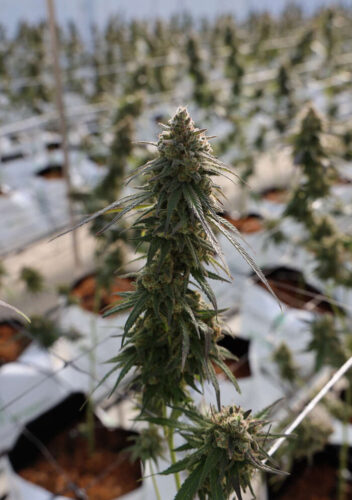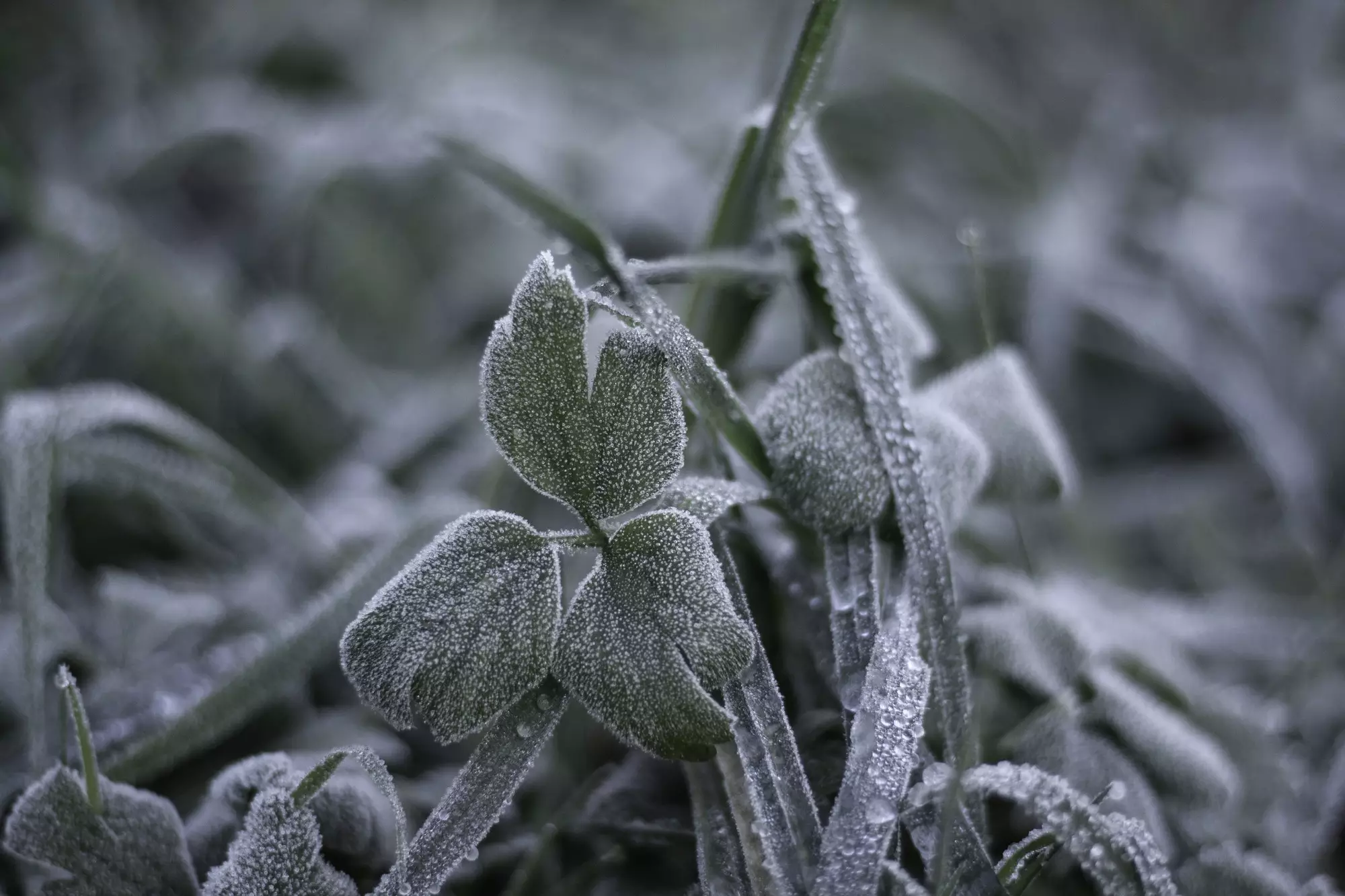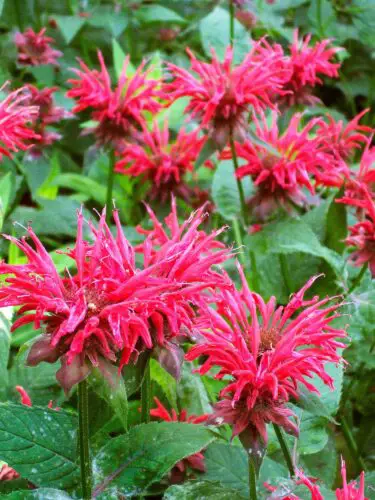Plants can’t grow in cold weather because low temperatures hinder their metabolic processes and freeze their tissues, limiting nutrient absorption and photosynthesis. In cold weather, plants face numerous challenges that impede their growth and development.
As temperatures drop, the metabolic processes within plants slow down, including the absorption of essential nutrients and water. This limits their ability to fuel growth and perform vital functions. Moreover, cold temperatures can cause the tissues of plants to freeze, which damages cell structures and inhibits growth.
These adverse conditions also affect photosynthesis, the process through which plants convert sunlight into energy, further hampering their growth potential. As a result, plants require optimal temperatures to thrive and fulfill their biological processes, making cold weather unsuitable for their growth. Understanding these limitations helps us appreciate the adaptations plants have developed to survive and thrive in their respective habitats.

Credit: www.marijuana-seeds.nl
Challenges Of Cold Weather For Plant Growth
Effect Of Low Temperature On Plant Metabolism
Low temperatures slow down plant metabolism, hindering growth and nutrient uptake.
Impact Of Frost On Plant Tissues
Frost damages plant tissues, leading to cell rupture and water loss, affecting overall health.

Credit: www.envii.co.uk
Adaptations Of Plants To Cold Weather
Plants, like humans and animals, have evolved various adaptations to survive in different climates and environmental conditions. When it comes to cold weather, plants have developed unique mechanisms to protect themselves from extreme temperatures. These adaptations not only enable them to survive but also allow them to resume growth when the weather becomes favorable again.
Natural Mechanisms For Cold Resistance
Plants possess remarkable natural mechanisms that help them withstand the harsh conditions of cold weather. These mechanisms are responsible for their ability to survive freezing temperatures and continue functioning when other organisms struggle to adapt.
- Tolerance to freezing temperatures: Certain plant species have the remarkable ability to tolerate freezing temperatures by developing adaptations such as a protective waxy layer on their leaves and stems. This layer helps prevent dehydration and reduces damage caused by freezing.
- Reduced water content: Plants adapt to cold weather by reducing their water content. This reduces the risk of ice crystal formation, which can damage cells. It also helps prevent desiccation caused by cold winds.
- Insulation: Some plants have adapted to cold weather by growing dense hairs or trichomes on their leaves, which provide insulation and reduce heat loss. This allows them to conserve energy and maintain a stable internal environment.
- Delayed growth and dormancy: In response to cold weather, many plants enter a state of dormancy or slow down their growth. This allows them to conserve resources and protect their delicate tissues until more favorable conditions return.
Role Of Antifreeze Proteins In Plant Survival
Antifreeze proteins are a remarkable adaptation found in certain plant species, allowing them to survive in extremely cold environments. These proteins help prevent ice crystal formation within the cells, which can cause significant damage. Here’s how they work:
- Inhibit ice crystal growth: Antifreeze proteins bind to ice crystals, preventing their expansion and further growth. This prevents the formation of large ice crystals that can rupture cells and tissues.
- Promote supercooling: These proteins lower the freezing point of plant tissues, allowing them to remain in a supercooled state without freezing. This helps the plant avoid damage from ice formation during rapid temperature fluctuations.
- Preserve cellular structures: Antifreeze proteins also help preserve the integrity of cellular structures by preventing ice crystal formation and maintaining the correct water balance within cells.
The presence of antifreeze proteins in certain plant species gives them a significant advantage in cold environments, allowing them to survive and even thrive in conditions where other plants cannot.
Human Interventions To Facilitate Plant Growth In Cold Weather
In order to counter the challenges posed by cold weather, humans have developed various interventions to facilitate plant growth. These interventions aim to maintain a suitable environment for plants to thrive, despite the unfavorable conditions. Through the use of protective coverings and the implementation of greenhouse cultivation, plants can overcome the harshness of cold weather and continue to grow and flourish.
Use Of Protective Coverings For Plants
Protective coverings serve as a shield against the cold weather, providing plants with the necessary insulation and protection. These coverings come in different forms, such as:
- Row covers: Lightweight fabric covers that offer protection from frost, wind, and low temperatures. They allow sunlight and moisture to reach the plants while creating a warm microclimate.
- Mulch: A layer of organic materials, like straw or leaves, spread around the base of plants to insulate the soil. It helps retain heat and prevents temperature fluctuations that can harm the plant’s roots.
- Cold frames: Enclosed structures with transparent tops that trap heat from the sun and create a warm environment for plants. They act as mini-greenhouses and enable year-round cultivation.
Implementation Of Greenhouse Cultivation
Greenhouse cultivation is a highly effective method to extend the growing season in cold climates. The controlled environment inside a greenhouse offers optimal conditions for plant growth by managing temperature, humidity, and light exposure. Some key features of greenhouse cultivation include:
- Heating systems: Greenhouses utilize heating systems to maintain a consistent and suitable temperature for plant growth. These systems can be powered by electricity, gas, or even renewable energy sources.
- Insulation: Well-insulated walls, ceilings, and floors prevent heat loss and keep the greenhouse warm. Insulation materials like double-layered glass or plastic help trap infrared radiation and retain heat.
- Ventilation: To regulate temperature and control humidity levels, greenhouses employ ventilation systems. These systems facilitate the exchange of air, preventing the buildup of excess heat and moisture.
- Supplemental lighting: In cold weather, when natural sunlight is limited, supplemental lighting can be used to provide plants with the necessary amount of light for photosynthesis. Light-emitting diodes (LEDs) are commonly used due to their energy efficiency and suitability for plant growth.
By implementing these interventions, humans have managed to overcome the challenges of cold weather and enable plants to grow and thrive. With protective coverings and greenhouse cultivation techniques, plants can flourish even in chilly conditions, extending the growing season and ensuring a constant supply of fresh produce.
Research And Innovations In Cold-resistant Plant Varieties
Research and Innovations in Cold-Resistant Plant Varieties
Breeders’ Efforts To Develop Cold-tolerant Crops
Breeders strive to enhance cold tolerance in crops through selective breeding methods.
- They meticulously cross-pollinate plants with natural cold-resistant traits.
- Breeders monitor and select plants with the best cold-tolerance characteristics.
- Cold-tolerant crop varieties are developed over several generations for resilience.
Genetic Modification For Cold Adaptation
Genetic modification plays a crucial role in creating plants adapted to cold climates.
- Scientists introduce specific genes that enable plants to withstand low temperatures.
- These genetic modifications enhance the plants’ ability to survive frost and cold stress.
- Genetic engineering accelerates the development of cold-resistant plant varieties.
Impacts Of Cold Weather On Agricultural Practices
Cold weather negatively affects agricultural practices as it inhibits plant growth. Low temperatures slow down biological processes vital for plants, such as photosynthesis and nutrient absorption. This limits crop production and can lead to financial losses for farmers.
Challenges Faced By Farmers In Cold Climates
` Cold weather poses numerous challenges for farmers, impacting agricultural practices significantly. The sub-zero temperatures, frost, and decreased sunlight exposure hamper plant growth. It becomes difficult to cultivate a variety of crops, affecting food production and the economy. `Economic And Environmental Consequences
` The adverse effects of cold weather on agricultural practices lead to economic and environmental consequences. Crop failures result in diminished yields and reduced income for farmers. Additionally, the lack of vegetation due to cold weather can contribute to soil erosion and environmental degradation.
Credit: www.bhg.com
Frequently Asked Questions Of Why Can’t Plants Grow In Cold Weather?
Why Do Plants Not Grow In Cold Weather?
Plants do not grow in cold weather because low temperatures slow down their growth processes.
Can Plants Survive Cold Weather?
Plants can survive cold weather as long as they are well-adapted to the conditions. They have mechanisms to protect themselves, such as dormancy and adjusting their metabolic processes. Some plants even thrive in cold climates due to their ability to withstand freezing temperatures.
What Is The Coldest Temperature A Plant Can Grow In?
Plants can grow at extremely low temperatures depending on the species. Some can survive -10 degrees Celsius or even colder.
How Do Plants React To Cold Temperatures?
Plants react to cold temperatures by slowing growth, closing stomata to conserve moisture, and producing antifreeze proteins.
Conclusion
In colder temperatures, plants struggle due to decreased sunlight and nutrients availability. Freezing conditions impact metabolic processes. To thrive in the cold, plants need adaptations like antifreeze proteins. Understanding how cold affects plant growth is crucial for successful cultivation in varying climates.
Let’s nurture our green friends accordingly.
